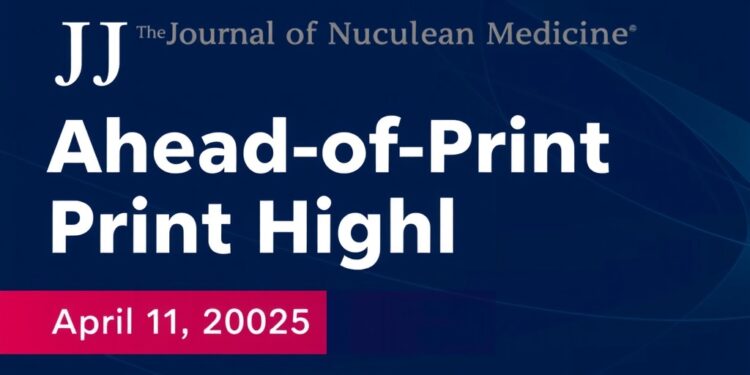New research published by The Journal of Nuclear Medicine (JNM) on April 11, 2025, has introduced groundbreaking findings that could significantly influence the management and treatment of prostate cancer. The advancement in imaging technology, particularly through the utilization of PSMA PET/CT scans, has revealed hidden metastatic pathways that challenge existing understandings of cancer spread. This study examined a cohort of nearly 100 patients, where researchers identified six instances of prostate cancer metastasizing to the testicles. These cases, uncommon and previously undetectable via conventional modalities such as ultrasounds, could lead to profound shifts in monitoring protocols for patients experiencing recurrence after primary treatment.
The implications of these findings extend far into clinical practice, suggesting that oncologists might need to broaden their surveillance strategies. As prostate cancer patients often face the risk of metastases, particularly after treatments like surgery or radiation therapy, the discovery necessitates a reassessment of how thorough surveillance should be. The landmark paper not only uncovers the anatomical complexity of prostate cancer spread but also emphasizes the necessity for advanced imaging techniques that can better clarify the intricate pathways of malignancy.
In parallel, researchers have demonstrated a novel ultra-low-dose PET scanning method, which effectively produces high-resolution images in a notably shorter timeframe of 20–30 minutes. This innovative approach leverages long-axial-field-of-view technology combined with a CT-free correction technique, termed LSO-TX. By tapping into background radiation emitted from the scanner materials, this method significantly decreases patient radiation exposure while maintaining the quality of diagnostic images essential for identifying cancer and metabolic conditions. This advancement represents a significant leap in addressing patient safety while ensuring diagnostic accuracy in tumor evaluation.
Furthermore, the balance between minimizing radiation exposure and avoiding the degradation of image quality displays a pivotal concern in the field of nuclear medicine. Ensuring that imaging techniques evolve in a manner that adheres to safety regulations while still providing clinicians with the tools necessary to make informed decisions is crucial. As healthcare providers increasingly prioritize patient-centered care, these innovations underscore how modern imaging technology can result in better outcomes.
The relevance of capable imaging methodologies cannot be overstated, especially given the evolving nature of cancer treatments and the urgency to tailor approaches specific to individual patient profiles. By providing clearer insights into the behavior of cancer at a molecular level, these imaging technologies will facilitate more precise interventions, effectively aligning with the growing trend towards personalized medicine. The application of advanced imaging might also influence researchers and clinicians to investigate further correlation between specific imaging findings and patients’ prognoses, ultimately refining treatment pathways and improving life expectancy.
As medical science continues to advance, the findings presented in this research are critical for propelling the field of nuclear medicine forward. The dual discovery of both unexpected spread patterns in prostate cancer and a more effective imaging technique pave the way for enhanced clinical practices. The intersection of these findings suggests that further exploration into the metastatic behavior of prostate cancer, particularly within the testicular region, should be prioritized, as it represents a potential blind spot in traditional diagnostic practices.
In light of these discoveries, support for ongoing research initiatives is paramount. Stakeholders within the healthcare community, including clinicians, researchers, and professional organizations, should advocate for the continued development of such technologies. This advocacy will not only ensure advancements in clinical applications but also promote the overall health and well-being of patients navigating these complex cancer pathways.
Moreover, the significance of these findings extends beyond immediate clinical implications; they highlight the necessity for comprehensive education within the medical community. As new research unveils unprecedented data, it becomes essential for healthcare educators to disseminate this knowledge effectively, ensuring that current and future medical practitioners are equipped with the most up-to-date information. Engaging medical students and professionals in discussions around the transformative nature of imaging techniques is vital for fostering an informed and prepared healthcare workforce.
Ultimately, the revelations surrounding prostate cancer’s rare metastatic potential and the emergence of ultra-low-dose imaging techniques represent an extraordinary leap forward in nuclear medicine. As clinical providers adopt these methodologies into their practices, patients could anticipate a more nuanced approach to monitoring and treatment, thereby enhancing overall outcomes and life quality. The ongoing evolution in imaging technology signifies a promising horizon where prostate cancer care is not only informed by science but also driven by empathy and a commitment to patient wellness.
With these advancements, healthcare professionals remain hopeful that such innovations will lead to more effective monitoring and treatment strategies. The focus will remain squarely on patient safety and care quality, breeding confidence in the systems designed to combat one of the most challenging diseases of our time. In conclusion, the integration of these findings into standard clinical practice represents a call to action within the medical community for continued research and adaptation.
Subject of Research: Prostate cancer metastases and ultra-low-dose PET scanning
Article Title: Tracing Prostate Cancer Beyond the Usual Path
News Publication Date: April 11, 2025
Web References: JNM Website
References: SNMMI Media Center
Image Credits: N/A
Keywords: Prostate cancer, metastasis, PSMA PET/CT scans, imaging technology, nuclear medicine, personalized medicine, patient safety, cancer monitoring.




